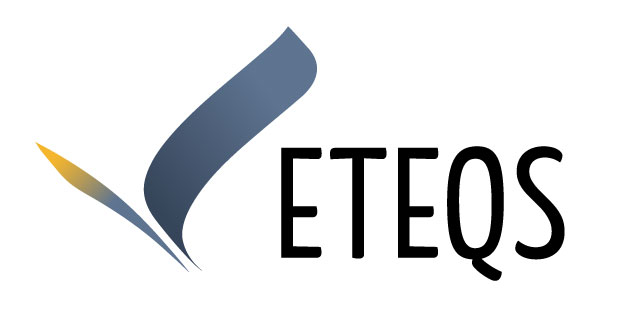How Transparency Enhances Player Confidence and Engagement
Building on the foundational understanding that Why Security Builds Trust in Online Games and Apps, it becomes evident that transparency plays an equally vital role in fostering a trustworthy gaming environment. While security measures protect against external threats, transparency actively involves players in the ecosystem, reinforcing confidence through openness and accountability. This synergy between security and transparency creates a resilient foundation for sustained player engagement and loyalty.
1. Introduction: The Intersection of Transparency and Player Trust in Online Games and Apps
Transparency in online gaming extends beyond mere disclosure; it embodies a commitment to open communication about policies, processes, and practices that directly impact players. When gamers understand how their data is handled, how game mechanics operate, and how issues are managed, they develop a sense of control and trust. This openness complements security measures by making the environment predictable and reliable—key ingredients in building long-term player confidence.
- Security focuses on protecting systems from threats, preventing breaches, and ensuring safe transactions.
- Transparency involves openly sharing information that allows players to understand the security measures and the functioning of the game ecosystem.
2. The Role of Transparent Communication in Building Player Confidence
Clear and honest communication about policies, updates, and incident handling reassures players and demonstrates accountability. For example, when a popular gaming platform faces a security breach, providing real-time updates about the incident, steps taken, and future prevention measures can mitigate panic and restore trust. Such transparency shows players that the platform values honesty and is committed to their safety.
| Practice | Impact on Player Confidence |
|---|---|
| Regular updates during security incidents | Builds trust through demonstrated accountability |
| Transparent policies on data privacy | Enhances perception of safety and respect |
3. Revealing Data Handling and Privacy Practices to Enhance Trust
Players are increasingly concerned about how their personal information is collected, stored, and used. Transparency in data practices can significantly influence their perception of the platform’s integrity. For example, providing clear, concise privacy policies—accompanied by visual summaries or infographics—helps demystify complex legal language, making it accessible and trustworthy.
“Transparency about data handling not only complies with legal standards but also fosters a sense of partnership with players—trust is a two-way street.”
Balancing transparency with legal and competitive considerations requires careful planning. While full disclosure might not always be feasible due to legal restrictions or proprietary information, sharing enough detail to demonstrate openness can satisfy players’ curiosity and concerns.
4. Transparency in Game Mechanics and Fair Play
Understanding how algorithms determine matchmaking or reward distribution can demystify the game experience. For example, openly explaining the role of random number generators (RNGs) and fairness mechanisms reassures players that outcomes are not rigged. Transparency in these areas encourages trust and reduces misconceptions, especially in competitive environments where perceived unfairness can lead to dissatisfaction.
- Open communication about reward systems increases engagement and perceived fairness.
- Explaining game design choices addresses misconceptions and builds credibility.
5. The Power of Transparency in Crisis Management and Incident Response
When breaches or bugs occur, transparent communication is crucial for maintaining player trust. For instance, companies that promptly acknowledge issues, explain their impact, and outline remedial actions tend to recover credibility faster. Apple’s transparency during its iCloud breach in 2014, which included clear explanations and updates, exemplifies how openness can mitigate long-term damage.
“Transparency transforms potential crises into opportunities to reinforce trust through honesty and accountability.”
Consistent, honest updates and accountability are key components of best practices in crisis communication, ensuring players feel informed and valued even during adverse events.
6. Enhancing Engagement through Community Transparency Initiatives
Involving players in development processes, such as beta testing or feedback surveys, demonstrates transparency and fosters a sense of ownership. For example, Riot Games’ transparent approach in publicizing beta test results and soliciting community feedback has cultivated loyalty and active participation.
- Transparency in beta testing promotes inclusivity and trust.
- Feedback loops ensure players feel heard and influence game evolution.
7. The Symbiotic Relationship Between Transparency and Security Measures
Transparency and security are mutually reinforcing. When players understand security protocols—like two-factor authentication or encryption—they are more likely to adopt and trust these measures. Additionally, transparency encourages proactive reporting of vulnerabilities, creating a collaborative security environment.
For example, bug bounty programs that openly communicate findings and rewards motivate security researchers and players to collaborate, transforming security from a reactive process into a proactive partnership.
8. Bridging to the Parent Theme: Reinforcing Security Through Transparency
As emphasized in Why Security Builds Trust in Online Games and Apps, security efforts are fundamental to establishing a safe environment. However, without transparency, even the strongest security protocols can appear opaque or suspect, leading to diminished trust.
Conversely, transparent practices—such as openly sharing security measures, incident reports, and data policies—amplify the effectiveness of security protocols. When players see the efforts behind the scenes, their confidence grows, fostering a resilient and loyal community.
Ultimately, the goal is to create a harmonious environment where security and transparency work hand-in-hand. This holistic approach not only mitigates risks but also cultivates a trustworthy space that encourages ongoing engagement and loyalty.

Deixe uma resposta
Want to join the discussion?Feel free to contribute!